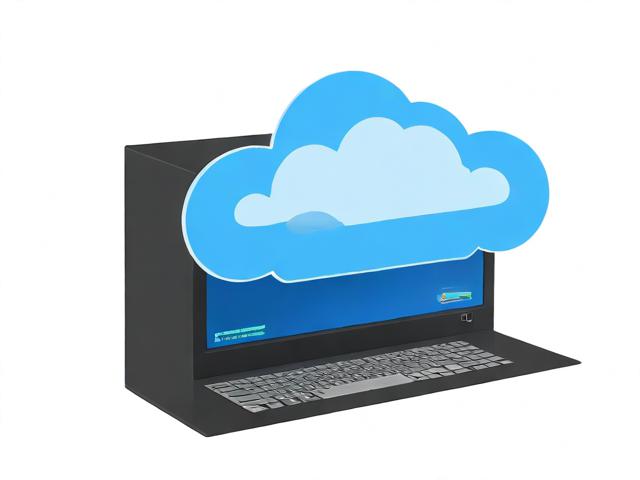c# 调用api
- 行业动态
- 2025-02-14
- 7
HttpClient类来发送HTTP请求并接收响应。以下是一个简单的示例:“ csharp,using System;,using System.Net.Http;,using System.Threading.Tasks;class Program,{, static async Task Main(string[] args), {, using (HttpClient client = new HttpClient()), {, client.BaseAddress = new Uri("https://api.example.com/");, HttpResponseMessage response = await client.GetAsync("endpoint");, if (response.IsSuccessStatusCode), {, string data = await response.Content.ReadAsStringAsync();, Console.WriteLine(data);, }, }, },},“
在C#中调用API是一项强大且灵活的功能,它允许开发者直接与操作系统或其他应用程序进行交互,以下是对C#调用API的详细解释,包括基本概念、调用方法、参数类型、示例代码以及常见问题解答。
一、基本概念
1、API的定义:API(Application Programming Interface)是应用程序编程接口的缩写,它是一组预定义的函数、过程或协议,允许不同的软件组件之间进行交互。
2、**C#中的API调用**:在C#中,可以通过P/Invoke(平台调用)技术来调用非托管DLL中的API函数,这涉及到使用System.Runtime.InteropServices命名空间下的DllImport属性来导入API函数。
二、调用方法
1、使用DllImport属性:这是调用API的关键步骤,通过DllImport属性,可以指定包含API函数的DLL文件的名称,并声明一个静态外部方法来表示该API函数。
using System.Runtime.InteropServices;
class Program
{
// 引入API函数
[DllImport("user32.dll")]
public static extern int MessageBox(int hWnd, string lpText, string lpCaption, uint uType);
static void Main()
{
// 调用API函数
MessageBox(0, "Hello, World!", "Test", 0);
}
} 在这个例子中,MessageBox函数被声明为一个静态外部方法,并通过DllImport属性指定了它位于user32.dll文件中,然后在Main方法中直接调用这个函数来显示一个消息框。
2、设置DllImport属性的字段:DllImportAttribute类提供了多个公共字段,可以用来进一步控制API函数的调用行为。
CallingConvention:指示向非托管实现传递方法参数时所用的调用约定,常用的有CallingConvention.Cdecl和CallingConvention.StdCall。

CharSet:控制调用函数的名称版本及指示如何向方法封送String参数,可以是CharSet.Ansi、CharSet.Unicode或CharSet.Auto。
EntryPoint:指示要调用的DLL入口点的名称或序号,如果方法名不想与API函数同名,则需要指定此参数。
ExactSpelling:指示是否应修改非托管DLL中的入口点的名称,以与CharSet字段中指定的CharSet值相对应。
PreserveSig:指示托管方法签名不应转换成返回HRESULT、并且可能有一个对应于返回值的附加[out, retval]参数的非托管签名。
SetLastError:指示被调用方在从属性化方法返回之前将调用Win32 API SetLastError。

三、参数类型
1、数值型参数:可以直接使用对应的C#数据类型,如int、long等。
2、字符串指针参数:在C#中通常使用string类型来表示。
3、句柄参数:在C#中通常使用IntPtr类型来表示。
4、结构体参数:需要先使用StructLayout特性限定声明结构或类,然后作为参数传递。
四、示例代码
以下是一个完整的示例,展示了如何在C#中调用Windows API来获取系统信息:

using System;
using System.Runtime.InteropServices;
class Program
{
// 定义一个结构体来接收系统信息
[StructLayout(LayoutKind.Sequential)]
public struct SYSTEM_INFO
{
public ushort wProcessorArchitecture;
public ushort wReserved;
public uint dwPageSize;
public IntPtr lpMinimumApplicationAddress;
public IntPtr lpMaximumApplicationAddress;
public IntPtr dwActiveProcessorMask;
public uint dwNumberOfProcessors;
public uint dwProcessorType;
public uint dwAllocationGranularity;
public ushort wProcessorLevel;
public ushort wProcessorRevision;
}
// 引入API函数
[DllImport("kernel32.dll")]
public static extern void GetSystemInfo(out SYSTEM_INFO lpSystemInfo);
static void Main()
{
SYSTEM_INFO sysInfo;
GetSystemInfo(out sysInfo);
Console.WriteLine("处理器架构: " + sysInfo.wProcessorArchitecture);
Console.WriteLine("页面大小: " + sysInfo.dwPageSize);
Console.WriteLine("处理器数量: " + sysInfo.dwNumberOfProcessors);
}
} 在这个示例中,首先定义了一个SYSTEM_INFO结构体来接收系统信息,然后使用DllImport属性引入了GetSystemInfo API函数,并在Main方法中调用该函数来获取系统信息并打印出来。
五、相关问答FAQs
1、问:如何在C#中调用非托管DLL中的API函数?
答:在C#中调用非托管DLL中的API函数,需要使用System.Runtime.InteropServices命名空间下的DllImport属性来导入API函数,并声明一个静态外部方法来表示该API函数,然后可以在代码中像调用普通方法一样调用这个API函数。
2、问:如何设置DllImport属性的字段来控制API函数的调用行为?
答:DllImportAttribute类提供了多个公共字段,可以用来进一步控制API函数的调用行为,可以使用CallingConvention字段来指定调用约定,使用CharSet字段来控制字符编码方式,使用EntryPoint字段来指定DLL入口点的名称或序号等。














